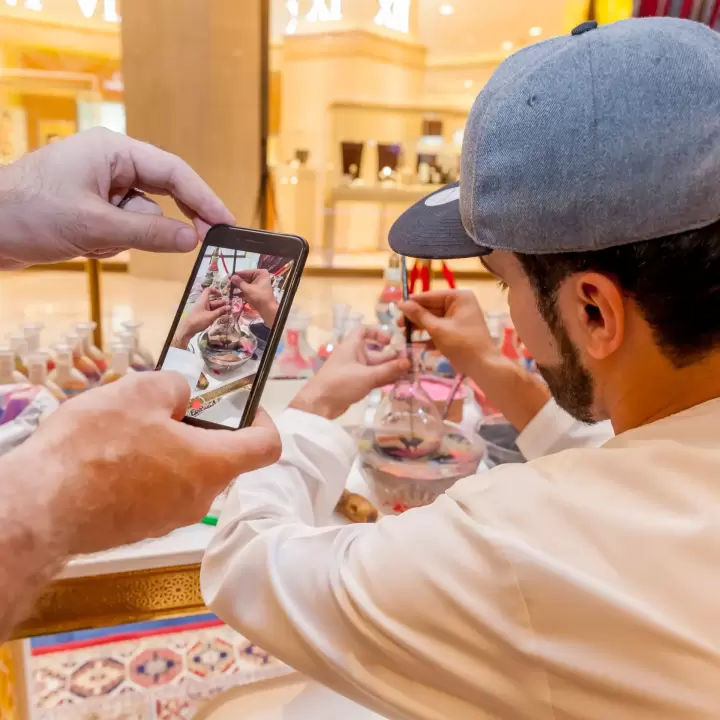Have you ever wondered how to crosspost effectively on social media?
Discover the secrets to masterfully crossposting on social media, so you can expand your reach and engage audiences without the redundancy. Dive into our blog to learn proven strategies that maximize impact and maintain creativity across all platforms.
LEARN MORE LAUNCH DEMO NOW In today's fast-paced digital world, social media has become an essential tool for anyone looking to broaden their online presence and connect with diverse audiences. But with so many platforms at our fingertips, it's often challenging to manage posting content across all of them efficiently. Have you ever wondered how to crosspost effectively on social media? If so, you're not alone. Crossposting is the art of sharing the same piece of content across multiple platforms, and when done correctly, it can save time while maximizing your reach and engagement.
However, crossposting isn't just about copying and pasting your content onto different platforms. Each social media platform has its own unique audience behaviors, preferred content formats, and posting styles. To truly capitalize on crossposting, one must consider tailoring each post to fit the platform's specific quirks and audience expectations. Whether you’re a small business owner, a budding influencer, or simply looking to enhance your personal brand, understanding the nuances of crossposting can transform your social media strategy. In this post, we'll explore effective crossposting techniques that enable you to share your content intelligently and stand out in the crowded social media landscape.
However, crossposting isn't just about copying and pasting your content onto different platforms. Each social media platform has its own unique audience behaviors, preferred content formats, and posting styles. To truly capitalize on crossposting, one must consider tailoring each post to fit the platform's specific quirks and audience expectations. Whether you’re a small business owner, a budding influencer, or simply looking to enhance your personal brand, understanding the nuances of crossposting can transform your social media strategy. In this post, we'll explore effective crossposting techniques that enable you to share your content intelligently and stand out in the crowded social media landscape.
Table of Contents
- What does crossposting mean in social media?
- Why is crossposting important for your brand?
- How can you crosspost effectively on multiple platforms?
- What are the best tools for crossposting on social media?
- What common mistakes should you avoid in crossposting?
- How does crossposting affect your SEO rankings?
- Why should you include a content strategy in crossposting?
- What is the future of crossposting on social media?
- Are you ready to crosspost effectively across your social channels?
What does crossposting mean in social media?
Crossposting in social media is the practice of sharing the same piece of content across multiple platforms to maximize its reach and engagement. By tapping into various audiences, it ensures that your message is seen by as many people as possible, which is essential in today's diverse digital landscape. It's a strategic way to maintain your social media presence without having to create entirely new content for each platform. However, successful crossposting requires a thoughtful approach to ensure that your posts are tailored to fit the unique characteristics and audiences of each social media channel.
Why is crossposting important for your brand?
Crossposting is crucial for your brand because it maximizes your content's reach and engagement by leveraging multiple platforms. By sharing your message consistently across different social media channels, you ensure that you connect with diverse audience segments who may prefer one platform over another. This strategy not only saves time by reducing the need to create platform-specific content but also reinforces your brand identity and messaging across various spaces. Ultimately, crossposting helps to increase visibility, grow your audience, and maintain a strong online presence, all of which are vital for brand success.
How can you crosspost effectively on multiple platforms?
Crossposting effectively on multiple platforms requires a strategic approach to ensure your content resonates with audiences across different social media sites. Firstly, it's important to understand the unique characteristics and demographics of each platform. For example, Instagram thrives on visually appealing images and short-form videos, while LinkedIn is more suited for professional and informative content. Tailoring your message to match the style and expectations of the platform not only increases engagement but also ensures your content feels genuine and relevant. By doing so, you maintain your brand’s voice while speaking the language of various audiences.
Additionally, consistency in posting is key to maximizing your reach and visibility. Creating a content calendar can help you plan and organize your posts, ensuring that you're regularly engaging with your audience without overwhelming them. When scheduling your crossposts, consider the optimal times for each platform; these can vary greatly and influence the success of your posts. Tools like Buffer or Hootsuite can streamline the scheduling process, saving you time and letting you focus on crafting quality content. Remember, effective crossposting isn’t just about sharing the same message everywhere, but adapting and presenting it in a way that leverages the strengths of each platform.
Additionally, consistency in posting is key to maximizing your reach and visibility. Creating a content calendar can help you plan and organize your posts, ensuring that you're regularly engaging with your audience without overwhelming them. When scheduling your crossposts, consider the optimal times for each platform; these can vary greatly and influence the success of your posts. Tools like Buffer or Hootsuite can streamline the scheduling process, saving you time and letting you focus on crafting quality content. Remember, effective crossposting isn’t just about sharing the same message everywhere, but adapting and presenting it in a way that leverages the strengths of each platform.
What are the best tools for crossposting on social media?
When it comes to crossposting effectively on social media, leveraging the right tools can make all the difference, ensuring your content reaches a wider audience with minimal effort. Hootsuite remains a popular choice, offering robust scheduling features across multiple platforms along with analytics to fine-tune your strategy. Buffer is another excellent tool, known for its clean interface and the ability to seamlessly schedule posts for optimal engagement times. Lastly, consider using Later, especially if your focus is visually-driven platforms like Instagram, as it provides easy drag-and-drop scheduling along with a preview feature to perfect your social feed's aesthetic.
What common mistakes should you avoid in crossposting?
When it comes to crossposting on social media, one common mistake to avoid is ignoring the unique nuances and audience expectations of each platform. Posting identical content across all channels can come off as lazy and may not resonate equally with users on different platforms. Another pitfall is neglecting platform-specific formats and dimensions, which can lead to poorly cropped images or cut-off text that diminishes the professionalism and impact of your posts. Lastly, be cautious of posting frequency; too much repetition across platforms can overwhelm your audience, while too little might result in missed opportunities for engagement.
How does crossposting affect your SEO rankings?
Crossposting on social media can be a double-edged sword when it comes to your SEO rankings. On one side, sharing the same content across multiple platforms can significantly extend your reach, providing more opportunities for your links to be clicked, shared, and ultimately drive traffic back to your website. This increased visibility can contribute positively to your site's authority and engagement metrics, both of which are factors that search engines consider when determining rankings. Moreover, when you effectively crosspost and adjust your messaging for each platform’s unique audience, you are more likely to generate meaningful user interaction, further enhancing your online presence and signaling search engines that your content is valuable.
On the flip side, it’s important to be aware that poorly executed crossposting might have negative effects on your SEO efforts. If identical content appears in various places, search engines might flag it as duplicate content, which can dilute your SEO performance rather than bolster it. Instead of seeing these posts as separate signals of content quality, search engines might struggle to decide which version to prioritize in the rankings. To avoid this pitfall, tweak and tailor your content slightly for each platform, ensuring freshness and relevance to its respective audience. By considering these factors and carefully planning your crossposting strategy, you can leverage social media to complement and enhance your SEO rather than inadvertently hinder it.
On the flip side, it’s important to be aware that poorly executed crossposting might have negative effects on your SEO efforts. If identical content appears in various places, search engines might flag it as duplicate content, which can dilute your SEO performance rather than bolster it. Instead of seeing these posts as separate signals of content quality, search engines might struggle to decide which version to prioritize in the rankings. To avoid this pitfall, tweak and tailor your content slightly for each platform, ensuring freshness and relevance to its respective audience. By considering these factors and carefully planning your crossposting strategy, you can leverage social media to complement and enhance your SEO rather than inadvertently hinder it.
Why should you include a content strategy in crossposting?
Including a content strategy in your crossposting efforts is essential for maintaining authenticity and consistency across different social media platforms. Without a clear plan, you risk diluting your brand message and confusing your audience. A well-thought-out strategy helps you tailor your content to fit the unique tone and demographic of each platform while ensuring that your core message remains intact. Ultimately, a strategic approach to crossposting maximizes your content's potential reach and engagement, fostering stronger relationships with your audience.
What is the future of crossposting on social media?
The future of crossposting on social media is becoming increasingly dynamic and intelligent, as platforms and tools evolve to better serve creators and brands. With advancements in AI and automation, we can expect more streamlined processes for tailoring content to fit different platforms' unique characteristics without losing authenticity. As user engagement data becomes more sophisticated, crossposting strategies will likely incorporate real-time analytics to adapt content for optimal reach and interaction. Ultimately, the focus will shift towards creating not just widespread visibility, but also meaningful engagement across all platforms.
Are you ready to crosspost effectively across your social channels?
As we come to the end of our exploration into the art of crossposting, it's time to ask yourself: Are you ready to take your social media strategy to the next level? With the insights we've shared, you should feel empowered to multiply your impact across various platforms. Remember, effective crossposting is not just about sharing identical content on different channels. It's about understanding the nuances of each platform, tailoring your message accordingly, and consistently engaging with your audience where they are most active.
With these practices in mind, you're well on your way to maximizing your reach and minimizing your workload. The key to success is to stay organized, leverage useful tools, and always maintain a clear understanding of your brand voice and goals. So, go ahead and start crafting those posts, adapting them for each platform, and watch your social media presence grow. There’s a whole digital world waiting to be engaged by your carefully crafted, crossposted content.
With these practices in mind, you're well on your way to maximizing your reach and minimizing your workload. The key to success is to stay organized, leverage useful tools, and always maintain a clear understanding of your brand voice and goals. So, go ahead and start crafting those posts, adapting them for each platform, and watch your social media presence grow. There’s a whole digital world waiting to be engaged by your carefully crafted, crossposted content.
SOCIAL MEDIA SCHEDULER
Plan and publish...
Plan and publish your content for Facebook, Instagram, Twitter, and LinkedIn from one simple dashboard.
LEARN MORE FREQUENTLY ASKED QUESTIONS
What is social media management platform?
RELATED BLOG POSTS
All the tips & tricks you'll need...
Get the fresh tips and tricks you'll need to ace social media marketing.












